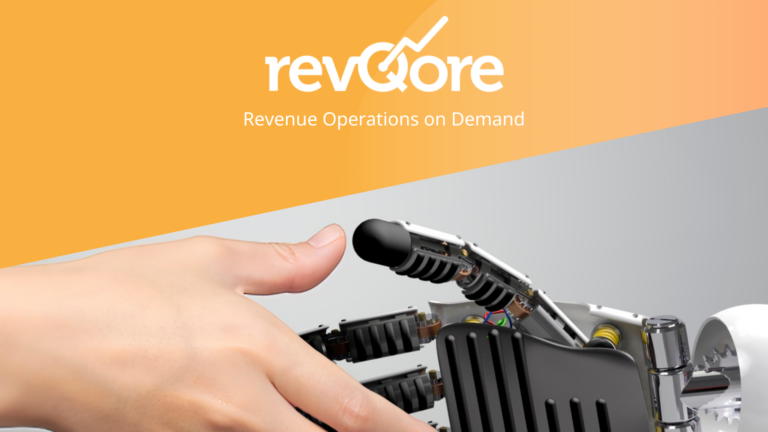Like any other area of technology, AI needs to deliver demonstrable impact to business top line and bottom line to justify its proliferation and growth in business. It is critical that commercial leaders demand ROI from AI initiatives (Source).
1. How GTM Teams Are Adopting AI
The recent State of RevOps ‘Data Quality’s Impact on GTM Execution’ report by RevOps Co-op highlights that respondents were most eager to use AI for predicting customer behaviour – specifically around fit, intent, and churn.
However, the most common AI use cases we’re currently observing are:
- Content Creation
- Data enrichment
- Sales Training & Coaching
- Prospecting
AI-supported Content Creation and Prospecting aim to personalise outreach and content marketing at scale, allowing teams to engage the most relevant, high-intent customers more efficiently. This approach can be valuable for businesses with a large Total Addressable Market (TAM) but less suited for niche markets with smaller customer bases, where a high-volume strategy is ineffective.
AI tools enhance existing CRM datasets by filling in missing information, validating existing data, and providing deeper customer insights. For example, HubSpot’s Breeze Intelligence enriches records from publicly available data and third-party sources, ensuring a more complete and accurate dataset for GTM teams. There are numerous tools available that provide this functionality.
Sales Training & Coaching utilising call recordings can play an impactful role in scaling high-performing sales teams, equipping leaders with the tools to develop top performers across the entire team.
2. What Next?
Leveraging AI for predictive customer insights, like churn analysis, is a significantly more complex use case. We believe it requires a solid foundation in current performance metrics, including reliable Sales & Marketing reporting, along with substantial preparatory work that demands both time and resource from RevOps teams.
Key prerequisites likely include:
- Win/Loss historical data to identify patterns.
- Documented & understanding of common buying signals that indicate purchase intent.
- Historical data churn drivers to understand why customers leave.
With a solid data foundation in place first, an AI tool can then begin learning from historical trends, continuously refining its customer behaviour insights as more deals are won and lost. However, this is not a quick win – it’s a long-term investment in data integrity and strategic learning.
3. Measuring ROI: Efficiency vs. Effectiveness
Introducing AI into the GTM strategy needs to deliver demonstrable impact to business top line and bottom line. To assess this, it is important to distinguish between Operational Effectiveness and Operational Efficiency:
- Operational Effectiveness: focuses on achieving strategic goals that drive revenue (top line)
- Operational Efficiency: reduces costs and resource requirements for executing key tactics (bottom line)
It’s possible to be efficient without being effective, and vice versa.
Example: Salesperson A books twice as many meetings as Salesperson B (efficiency), but fails to close a high percentage of deals (ineffectiveness). Salesperson B has an excellent closing rate (effectiveness) but is managing too few leads through the pipeline and missing quota (inefficiency). Source
Achieving a balance between the two could look like:
- For Effectiveness: Measuring how AI drives revenue, such as improved lead-to-close rates or increased engagement rates on AI-generated content.
- For Efficiency: Tracking cost savings, such as reduced headcount costs (AI automating repetitive tasks) or lower customer acquisition costs (AI optimising targeting).
Setting realistic expectations and categorising ROI measurement by timeframe is recommended. There will always be a ramp-up period.
For example:
- Mid-term (3–6 months): Improved conversion rates
- Long-term (6-9+ months): Increased revenue, enhanced customer retention, and greater cost efficiencies
4. Choose Your Metrics
To accurately measure AI’s impact, it’s essential to first assess current performance and establish benchmarks. From there, track improvements following AI implementation. For example:
- Lead scoring and pipeline insights: Measure lead-to-close rates before and after AI.
E.g. “AI-driven lead scoring increased our sales-qualified lead (SQL) conversion rate by 15%, resulting in an additional £500K in pipeline over 6 months.”
- AI-generated content: Measure engagement rates (open/click rates) compared to manually written content.
- Timesaving: How much time is saved by automating tasks like CRM data entry & enrichment? Is that time being spent on more customer interactions?
E.g. “Automating CRM data entry saved 10 hours per rep per month, allowing reps to focus on revenue-generating activities, resulting in more meetings booked.”
Summary
Tying marketing activities to revenue is already a challenge for many businesses we work with, so measuring AI’s impact will present similar obstacles.
Whether focusing on top-line growth, bottom-line efficiency, or balancing both, framing AI adoption within these terms will ensure the business can measure how impactful their initiatives are.
Sources
https://www.revopscoop.com/reports/the-2025-state-of-revops-survey
